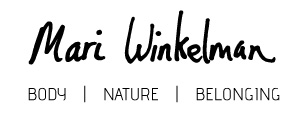When I feel safe, I feel I can deal with most things myself or by asking for help. Perhaps more importantly, in this state I feel more trusting that I am okay with the unresolved things.
 What is safety and how does safety feel to you? What is threatening and how does threat feel like to you? Do we all feel safe or feel threatened by the same things? This is a very important question in therapy because safety is such an essential condition for trust. To trust a therapist it is essential that they take an interest in understanding what feels threatening to you, and that they help you feel supported and safe.
What is safety and how does safety feel to you? What is threatening and how does threat feel like to you? Do we all feel safe or feel threatened by the same things? This is a very important question in therapy because safety is such an essential condition for trust. To trust a therapist it is essential that they take an interest in understanding what feels threatening to you, and that they help you feel supported and safe.
Feeling safe is a sense of ease and connection to our environments and people in them, which enables us to relax, play, enjoy physical contact and creativity alone or with others. I say more about this below. Safety is not the absence of threat, but it is a feeling we get from our resourcefulness to deal with potential threats. Feeling safe enables us to open our minds more creatively, and to share problems with others, which in turn helps us to deal with threats or problems more effectively. Can you feel into an example of when you could collaborate with others in the absence of fear to solve a problem, however small or large?
Fearfulness exists as potential for surviving actual threats to our bodies and we have fear-based thoughts that organise our body feelings and actions. We can get ‘triggered’ into fear if we feel, hear, smell or see things that remind us of life threatening events in our past, or if we are stuck in unknown situations and don’t know how to get out. If fear is intense, our thoughts become very ‘black and white’ and we feel compelled to try ‘this’ or ‘that’ again and again until we solve the problem. Can you feel into this sort of experience for yourself?
We get our fear and safety feelings from a particular branch of our nervous system that we inherited from our animal ancestors. The strength and speed of the onset of feelings of fear increased our chances of survival of attacks from predators. Like animals, we base our responses to threat on our experiences of what has worked or not worked for us to overcome or escape threats in the past. Like pack animals, humans can feel safer when in a group and feeling safe creates conditions for mental and physical health to thrive.
Primates and Humans also have an additional safety mechanism which most other animal species don’t have: a complex level of social empathy. We use our faces and our voices to try to create safe, attuned relational connections with others so that we know that those we are with are on our side.
Social empathy brings feelings of wellbeing as well as opening us to creative dialogues and activities with others. Our bodies and our thoughts are deeply connected so that if social empathy is working, we experience relaxation, wellbeing and spontaneity in behaviour. A good level of social empathy with those around us enables us to feel safe and therefore at ease in our bodies which encourages health and creativity within us.
If we don’t feel social empathy, we most likely feel neutral or estranged from other people. Our threat responses may be activated and we may start to feel estranged from people and anger or fear escalate, such that we fall back into patterned reactions of behaviour and thinking which are more related to fight, flight and freeze. These conditions can impact detrimentally on our physical and mental health, as we isolate or are isolated and our bodies are stressed and unable to relax.
 This is one of the important factors in my work with clients and I will do all that I can to help each person find the conditions they need to feel safe enough or understand what is feeling threatening. For each person this is very different, so there is no such thing as a ‘safe space’ because it is a process that needs to be understood from the individual experiences. Cultural biases and assumptions can fundamentally affect how safe or unsafe people feel together, and as a therapist I do personal enquiry and reflect on my interactions with others to recognise more of how I am influenced by my biases.
This is one of the important factors in my work with clients and I will do all that I can to help each person find the conditions they need to feel safe enough or understand what is feeling threatening. For each person this is very different, so there is no such thing as a ‘safe space’ because it is a process that needs to be understood from the individual experiences. Cultural biases and assumptions can fundamentally affect how safe or unsafe people feel together, and as a therapist I do personal enquiry and reflect on my interactions with others to recognise more of how I am influenced by my biases.
Then, when enough interpersonal safety is established, I support people to sense into their bodies and notice where, in their everyday lives they might feel fear tension or wellness and relaxation. This often matches how they are feeling threatened or safe. Once this is established, we can explore the evidence in the present moment and from the client’s history – both from personal and societal impacts – that can explain why they feel this and together explore how to relate with the damage of past and ongoing threats and how to resource and strengthen them to meet the external world with more ‘safety’ – connection to feeling resource, resilience, interpersonal care – in their inner world.
If you are curious about what I have written here because you are feeling stressed, fearful or overwhelmed by aspects of your life, maybe you could benefit from some therapy or more focused embodied guide sessions. I would be very glad to hear from you. I offer a free 20 minute phone consultation in which to help you take the next step toward getting help. Please contact me to enquire if I can help you.
References
The Body Keeps the Score: Bessel Van Der Kolk. 2015. Penguin Press
When the Body Says No – Exploring the Stress Disease Connection: Gabor Mate. 2013. John Wiley & Sons Ltd
The Polyvagal Theory: Neurophysiological Foundations of Emotions, Attachment, Communication, and Self-Regulation. Dr Stephen Porges. 2011. Norton Series on Interpersonal Neurobiology. USA.
The Polyvagal Theory in Therapy. Deb Dana. 2018. W. W. Norton, Inc. USA


